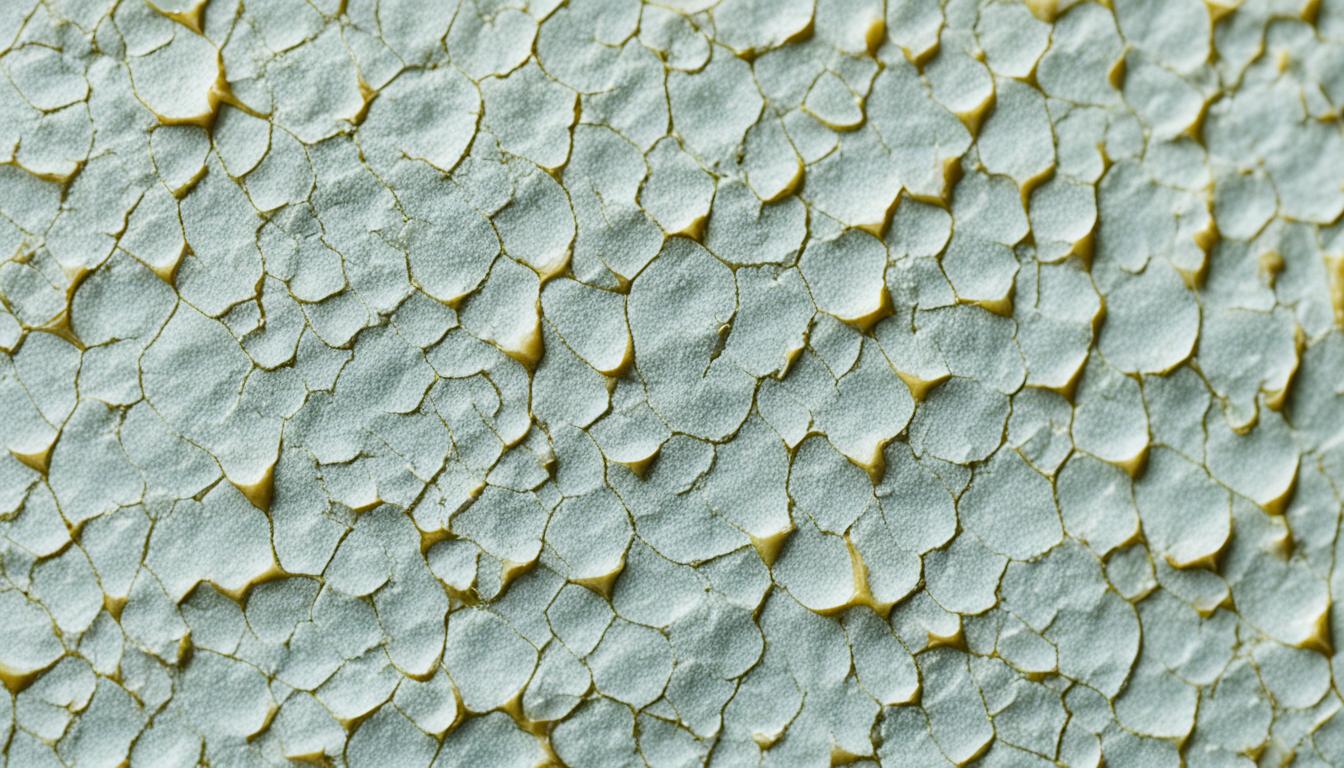Lichen sclerosus (LS) is a disease that mostly affects the genital skin. It leads to ivory-white patches, atrophy, and severe itching. Men and women can get LS, but it’s more common in women.
The exact cause of LS is a mystery, although genetics and family history may play a part. Injuries, hormone levels, and some drugs could also influence its development. LS is linked to the immune system’s Th1 response and may harm genes that help with tissue repair.
Doctors often diagnose LS by examining the skin. If it’s unclear, they might do a skin biopsy. The first step in treating LS is using powerful skin creams. Surgery could be needed for extreme cases. People with LS should get regular check-ups to avoid serious complications like cancer.
Key Takeaways:
- Lichen sclerosus is a chronic mucocutaneous immune-mediated disease that primarily affects the genital skin.
- It is characterized by ivory-white patches, atrophy, and severe itching.
- The exact cause of lichen sclerosus is still unknown, but genetic and familial predisposition, trauma, hormonal status, and certain drugs may play a role.
- Diagnosis is usually based on clinical features, with a skin biopsy performed in uncertain cases.
- First-line treatment includes ultrapotent or potent topical glucocorticoids, with surgical procedures for anatomical changes.
Lichen Sclerosus: Impact and Treatment Options
Lichen sclerosus (LS) is a chronic disease that affects the skin. It can lower someone’s quality of life. It leads to discomfort, itching and pain. It can even reduce sexual activity. Exploring different treatments is key to managing LS.
Traditional Treatment: Cortisone Creams and Ointments
The usual way to treat LS is with strong cortisone creams or ointments. These help with itching and inflammation. But, they don’t get rid of the disease completely. They just make the symptoms more bearable.
Advancements in LS Treatment: Stem Cell Therapy
Stem cell therapy is a new method to treat LS. It involves using the patient’s own fat cells. These cells are then put under the skin in the affected areas. This treatment is not severe and it has shown good results in helping the skin look better and relieving LS symptoms.
Natural Remedies and Management Strategies
Along with medical treatments, natural remedies can also help. They improve LS symptoms and overall well-being. Here are a few that can lessen LS effects:
- Keep the affected areas clean to avoid infections.
- Moisturize your skin to reduce dryness and irritation.
- Avoid harsh soaps, detergents, and synthetic fabrics that can make LS worse.
Prevention and Regular Check-ups
There’s no sure way to prevent LS. Yet, early care and regular checks are important for effective management. These checks help track LS’s progress and spot complications. They also help make treatments better.
Using a mix of medical care, natural remedies, and good self-care strategies can better life with LS. It can reduce symptoms and improve life quality. This is possible for those with LS.
Comparison of LS Treatment Options
| Treatment Option | Benefits | Drawbacks |
|---|---|---|
| Cortisone Creams and Ointments | Reduces itching and inflammation | Does not cure the disease |
| Stem Cell Therapy | Promising results in improving skin appearance and relieving symptoms | Costly and may not be accessible to all |
| Natural Remedies and Management Strategies | Can provide symptom relief and improve overall well-being | May require consistent and long-term adherence |
Conclusion
Lichen sclerosus is a chronic immune-mediated disease targeting the genital skin. It causes a lot of discomfort and can change someone’s life quality. Though its cause is not fully understood, genetics and the immune system seem to play a big role.
Doctors usually recognize lichen sclerosus through white patches, thin skin, and severe itching. To help, they may suggest using special creams, surgery, or even stem cell treatments.
It’s important to catch and treat this disease early. Regular doctor visits and a proactive approach are key. Also, more research is needed to better manage and treat lichen sclerosus.

